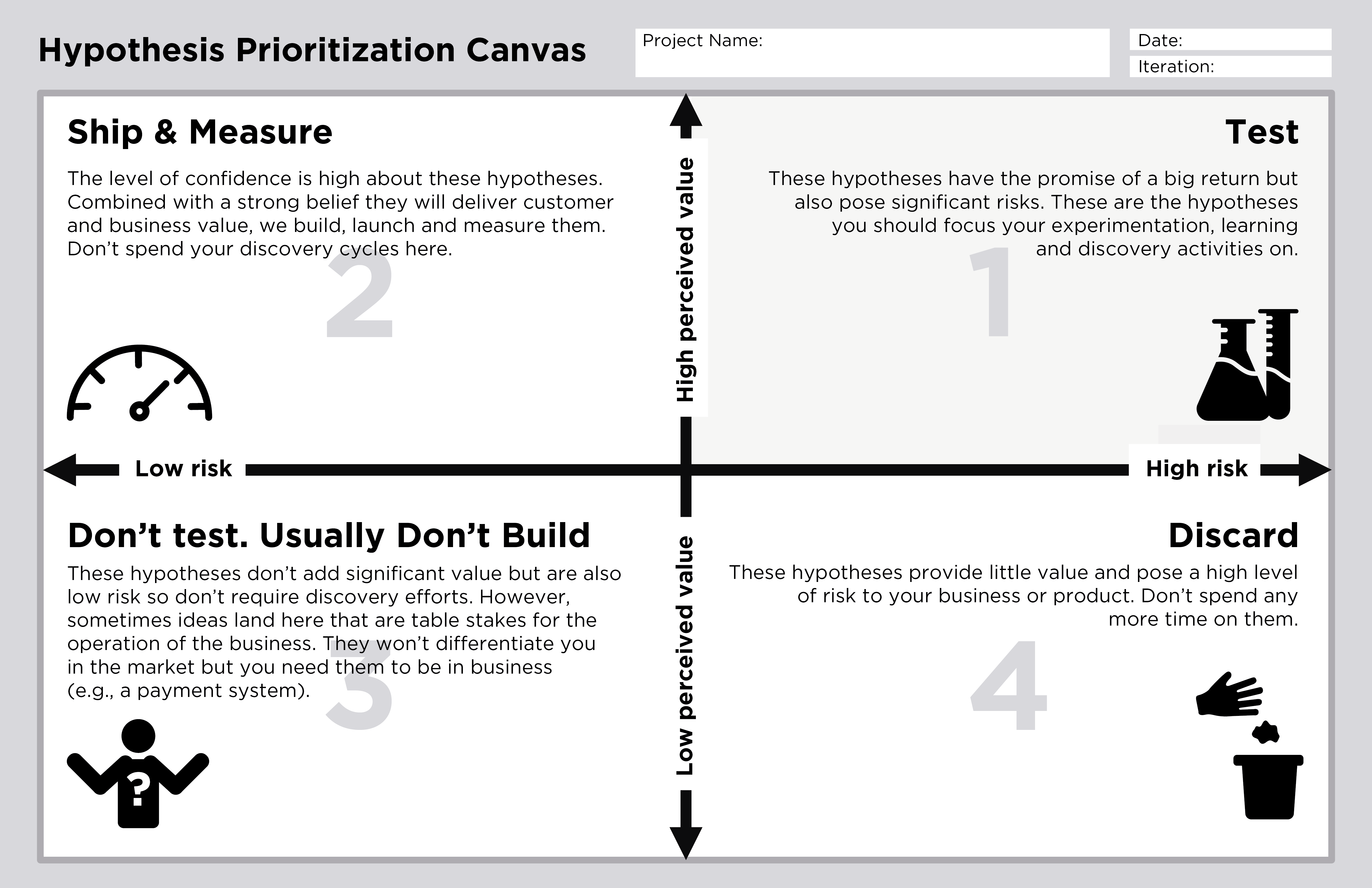“A lot of organizations prefer to talk about testing rather than research because it sounds definitive and finite. (We passed the test! We’re done!) If you are running a company or building a product, you have to commit to continuous learning.” – Erika Hall, Author of Just Enough Research
To keep growing, you have to be able to point out gaps in your organization’s knowledge, flag business assumptions, and challenge hypotheses.
Unfortunately, we don’t know what we don’t know… There are assumptions that we perceive as truths, and truths that we perceive as gaps.
The best way to bring knowledge gaps to the surface is by ensuring that your team’s assumptions get flagged as assumptions.
Doing this often means establishing processes to help make sure that co-workers point out each other’s assumptions.
Tactics to Flag Business Assumptions
- Inviting comments and feedback on backlog items: Sian Townsend, a research manager at Instagram, recommends keeping a list of the top ten feature requests and customer issues. Making these lists accessible to everyone in the organization will help fuel discussions and reveal false assumptions.
- Creating a culture of radical truth and radical transparency: To help reduce the role of ego in decision-making processes, team members at Drift are expected to point out assumptions in their colleagues’ work. Not only does this help surface business assumptions, it also forces team members to think through the assumptions they make in their work. Although the practice can be taxing, Drift’s unique culture helps reinforce the behavior.
- Speaking in terms of bets and confidence: User Story Mapping author Jeff Patton recommends assessing confidence in terms of bets. Whenever the team has an idea, validates a hypothesis, or uncovers new facts about users or customers, Jeff recommends asking team members what they would be willing to bet on the new information. Would they be willing to bet their lunch? Their day’s pay? Their car? Their retirement savings? Answers should help reveal true validated learning, or a lack thereof.
- Writing down beliefs: John Cutler recommends getting team members to formally express their beliefs around the product vision, the product value, or the markets, by asking them, one by one to fill in the blanks: “Our direct competition is [____].”, “I think the real reason why we win new customers is because [____].”, and “If we focus on meeting [ a specific customer need ], and do that extremely well, we will have some leeway when it comes to [ less important challenges ].”.
Fill your learning backlog with the assumptions that come out of these exercises.
Prioritizing Findings
Hypotheses can be prioritized using a Hypothesis Prioritization Canvas like Lean UX co-author’s Jeff Gothelf’s:

This is a simple 2×2 matrix designed to help teams assess the relative risk and value of validating each of their hypotheses.
Your research and experiments should focus first on high risk/high value hypotheses.
Fill up your learning backlog and move on!
– –
This post in an excerpt from Solving Product. If you enjoyed the content, you'll love the new book. You can download the first 3 chapters here →.